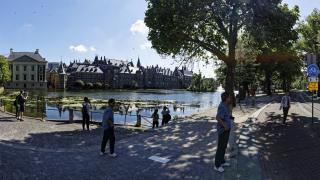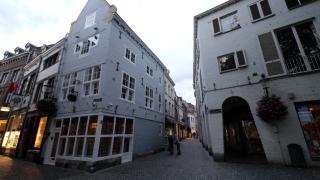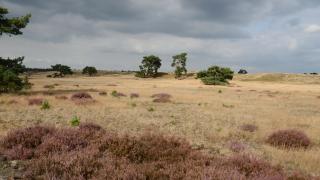Weather-Proofing Your Suitcase
Dutch weather is unpredictable. Rain can fall any month. Amsterdam averages 185 rainy days per year. Sudden wind gusts are common, especially near the North Sea. Temperatures can swing 10°C within hours, even in July. Locals rarely use umbrellas. Strong winds make them impractical. Instead, Dutch people wear water-resistant jackets. A basic rain jacket costs €30-€60 at HEMA or Decathlon. Waterproof shoes are essential, especially for walking or cycling. Bring quick-dry socks; local brands like Zeeman sell them for €3 per pair. Layering is key. Dutch residents wear t-shirts, sweaters, and light jackets together. Remove or add layers as needed. Pack a compact, foldable raincoat. Avoid heavy coats unless visiting in January or February. Gloves and hats are useful year-round. Even summer evenings can drop below 15°C. Weather apps like Buienradar help locals plan daily outfits. Check forecasts each morning. Pack for all seasons, regardless of month. Include a scarf; Dutch people use them for warmth and wind protection. Laundry facilities are common in hotels and hostels. Re-wear layers to save suitcase space. Avoid packing umbrellas. Instead, invest in quality outerwear. This approach matches Dutch habits and the local climate.
Layering Like a Local
Dutch layering is practical and weather-driven. Locals use light sweaters, waterproof windjacks (jackets), and scarves year-round. Trui (sweater) and regenjas (rain jacket) are essential. The '5, 4, 3, 2, 1' method is common: 5 tops, 4 bottoms, 3 layering pieces, 2 shoes, 1 dress/skirt. This fits in a 40L carry-on. Dutch style is understated. Neutral colors like navy, grey, and black are popular in Amsterdam and Utrecht. Scarves are worn in all seasons, often bought at HEMA or Zeeman for €5-€10. Waterproof jackets are preferred over umbrellas, as wind often makes umbrellas useless. Good options are found at Decathlon or Bever for €30-€80. Shoes must handle rain and cobblestones. Locals wear sneakers or waterproof boots, not heels. Popular choices include G-Star RAW or Van Haren brands. Changeable weather means layers are added or removed throughout the day. In spring and autumn, locals wear a tussenjas (mid-season jacket). In winter, a thick scarf and thermal base layer are common. Dutch people rarely overdress; comfort is key. Avoid flashy logos to blend in. Bring a compact backpack for layers, as locals do when cycling.
Rain-Ready Essentials
Rain is frequent in the Netherlands. Locals rarely use umbrellas. Strong winds in cities like Rotterdam or The Hague make umbrellas impractical. Instead, Dutch commuters prefer:
- Waterproof outerwear: A quality regenjas (rain jacket) is standard. Expect to pay €40–€120 in Dutch shops like HEMA or Bever.
- Compact raincoats: Foldable ponchos are sold at Albert Heijn supermarkets for €2–€5. These fit easily in a daypack.
- Hats and hoods: Wide-brimmed hats or jackets with hoods protect against sideways rain, especially when cycling.
- Water-resistant bags: Locals use fietstassen (bike panniers) or dry bags. Waterproof backpacks cost €30–€80 at Decathlon.
- Packing cubes: Choose water-repellent cubes to keep clothes dry inside luggage.
- Quick-dry fabrics: Synthetic shirts and socks dry fast after sudden showers. Dutch stores stock merino wool socks for €8–€15 per pair.
- Extra socks: Always pack two spare pairs. Wet feet are common after walking on cobblestones in the rain.
Smart Packing for Bikes & Trains
Dutch trains and trams have limited luggage space. Luggage racks are above seats or at carriage ends. Maximum suitcase size is 85 x 85 x 30 cm on NS trains. Rugzak (backpack) is preferred for cycling. Rolling suitcases are difficult on cobblestones and bike racks. Most Dutch train stations have stairs, not lifts. Pack light to carry bags up steps. Intercity travel between Amsterdam, Utrecht, and Rotterdam takes 30–60 minutes. Frequent moves mean less luggage is easier. Daypacks are essential for Dutch travel. Include:
- OV-chipkaart (public transport card)
- Water bottle (tap water is safe everywhere)
- Rain poncho (umbrellas are rare)
- Phone charger (trains have USB ports)
- Snacks (Albert Heijn To Go at most stations)
- Small lock for bike storage Cyclists use panniers or backpacks. Panniers fit standard Dutch rear racks. Bike rental shops offer panniers for €4–€8 per day. Avoid overpacking; Dutch train aisles are narrow. Luggage lockers (bagagekluizen) cost €7–€10 per 24 hours at major stations. Always label bags with your name and Dutch phone number. Most Dutch locals travel with one backpack and one small daypack.
Forgot Something? Local Shopping Tips
Forgot essentials? Dutch stores are easy to access. HEMA sells toiletries, socks, and adapters. Prices: €2–€10. Albert Heijn supermarkets stock toiletries, snacks, and basic medicines. Most open 8:00–22:00. Outdoor shops like Bever offer rain gear and bike accessories. Rain ponchos cost €10–€20. Pharmacies (apotheek) sell prescription medicines. Bring your own if you need specific brands; Dutch rules are strict. Specialty items (US/UK plug adapters, rare cosmetics) are limited. Sunday opening hours vary by city. Self-checkout is common. Bags cost extra (€0.25–€0.50). Card payments are preferred; some shops do not accept cash. Ask for “bonnetje” (receipt) if needed. Most stores are within 10 minutes’ walk in city centers. Staff usually speak English. Return policies: 14–30 days with receipt.
Quick-Check Packing List
Checklist for Netherlands travel:
- Passport, visa, BSN letter (for longer stays)
- OV-chipkaart for public transport; buy at Schiphol or stations (€7.50)
- Debit card with Maestro logo; cash is less accepted in Dutch shops
- Rainproof shoes; local brands like Van Haren sell waterproof sneakers (€30–€60)
- Plug adapter (Type C/F, 230V); available at HEMA for €6
- Light scarf and gloves (October–April)
- Reusable shopping bag; plastic bags cost €0.25 at Albert Heijn
- Medications with Dutch prescription if needed
- eSIM or local SIM; prepaid data starts at €10/month
- Copies of key documents; keep digital and paper versions
- Pack light; Dutch stairs are steep and narrow












